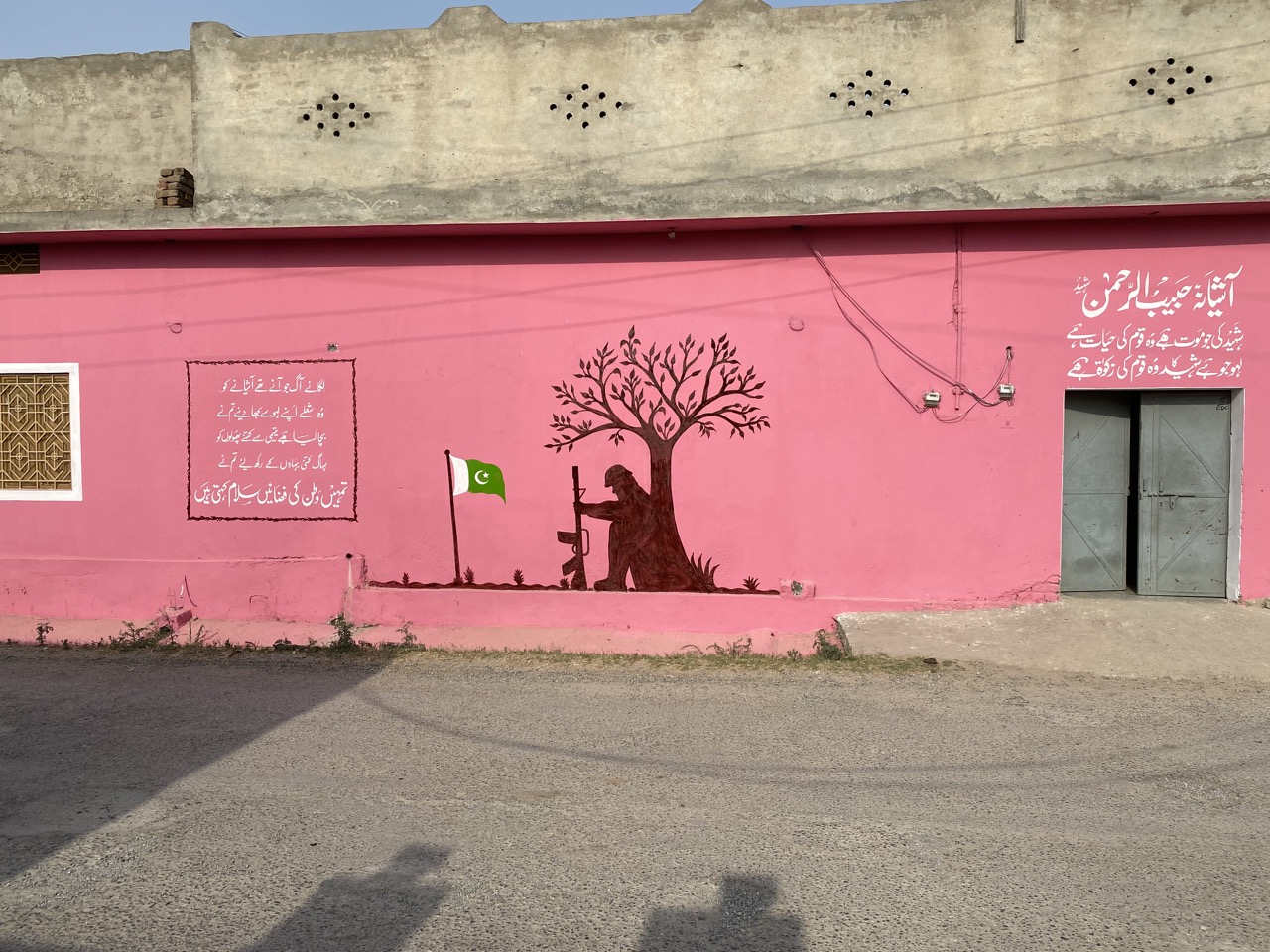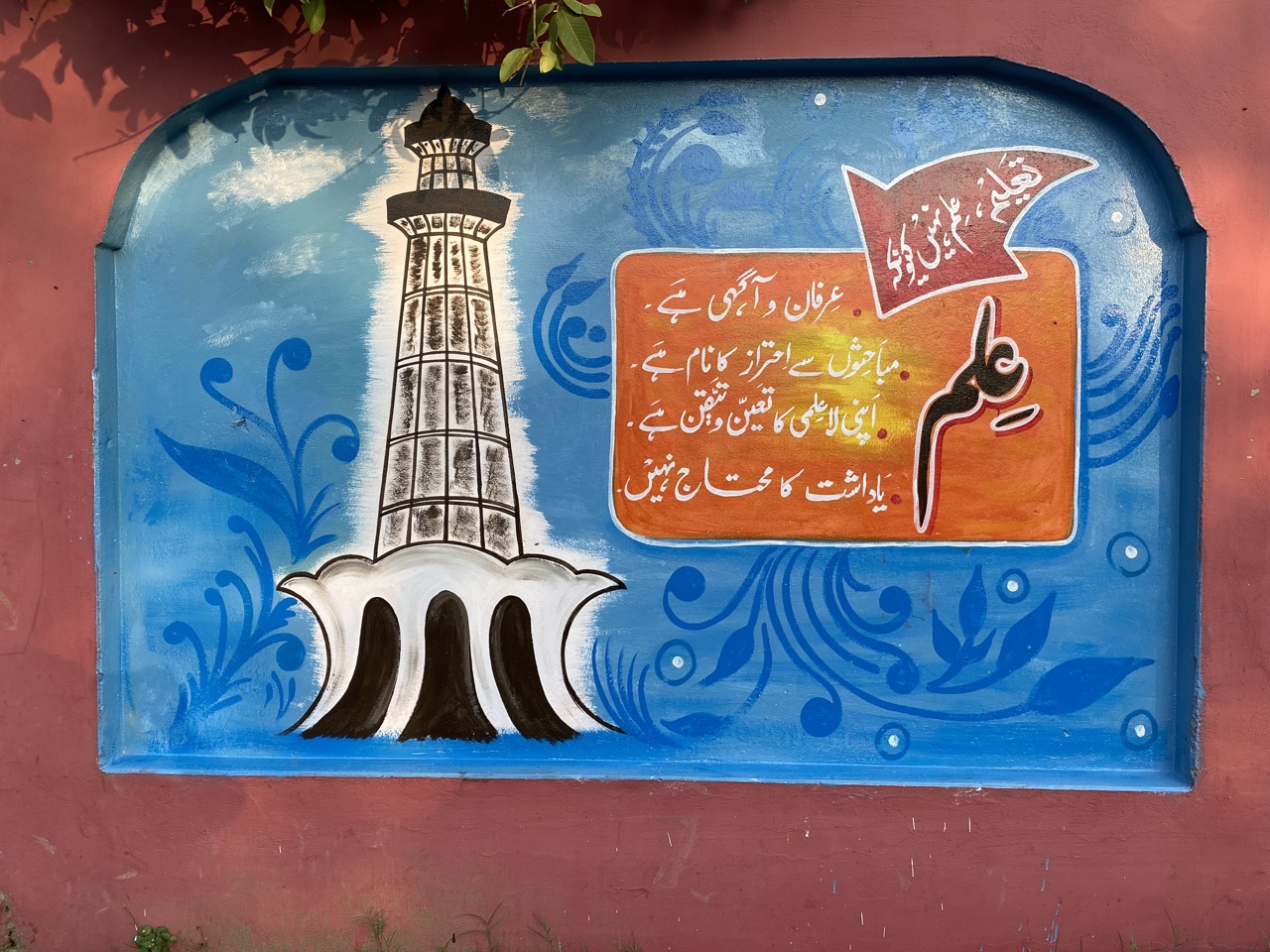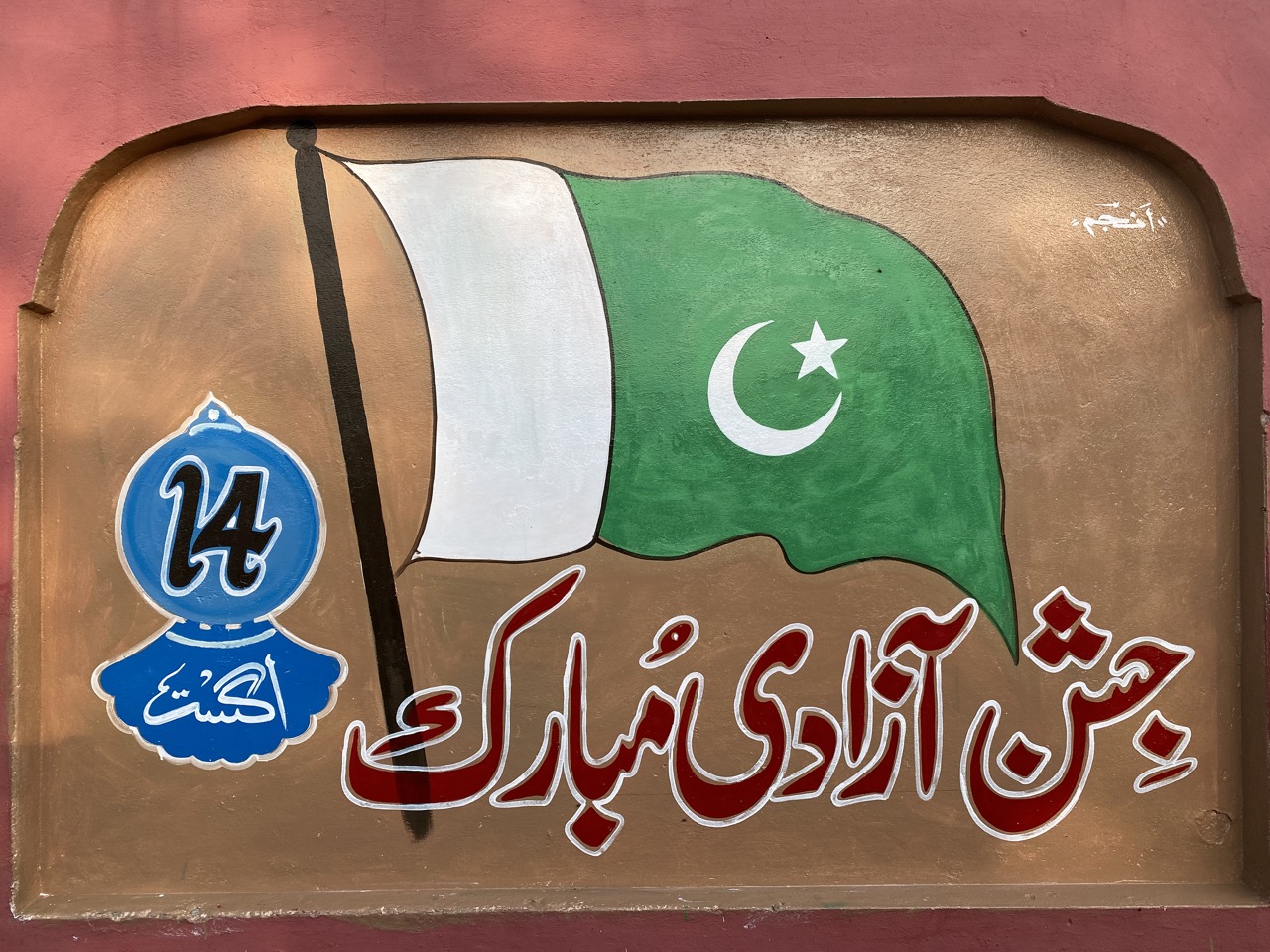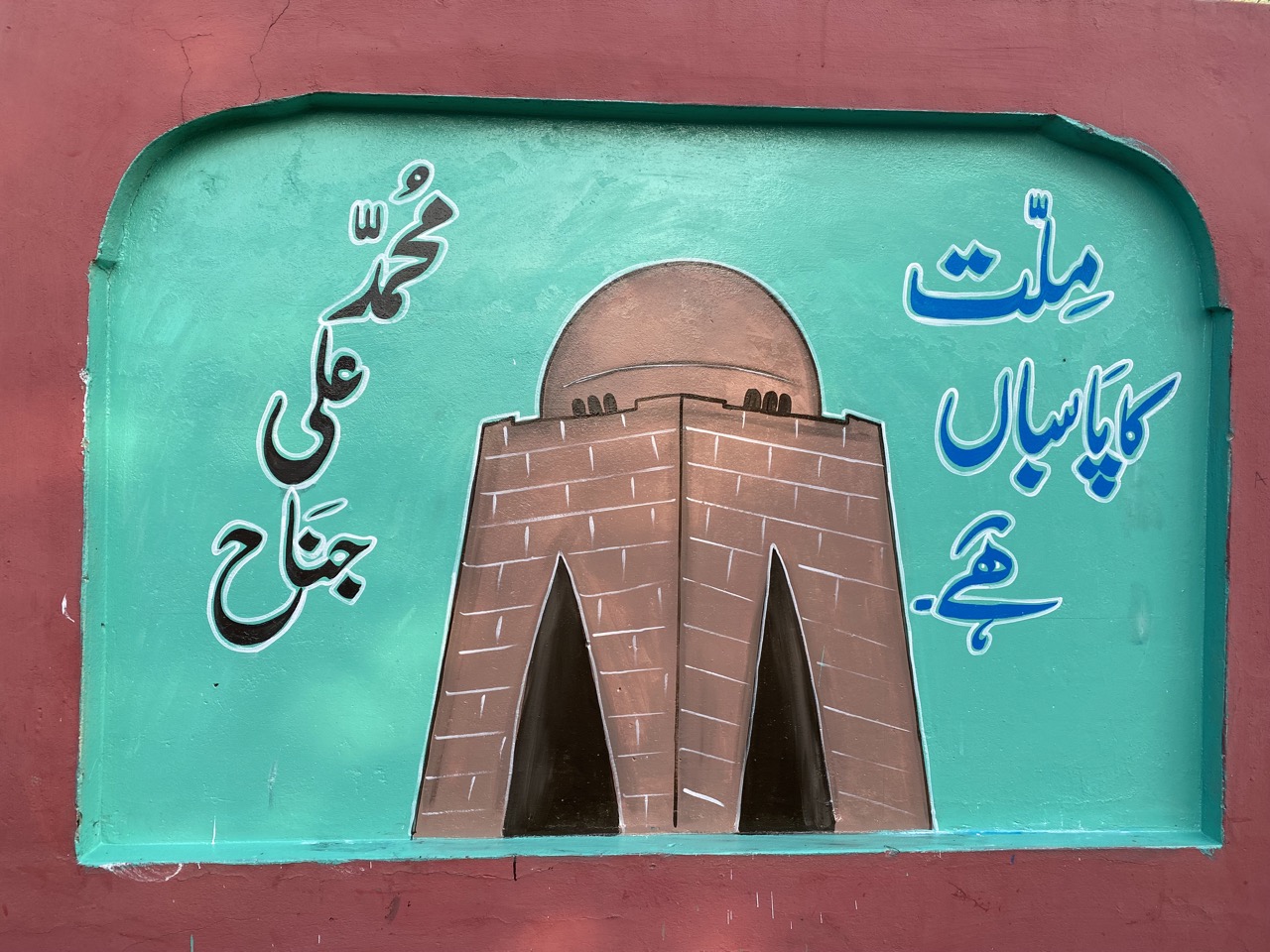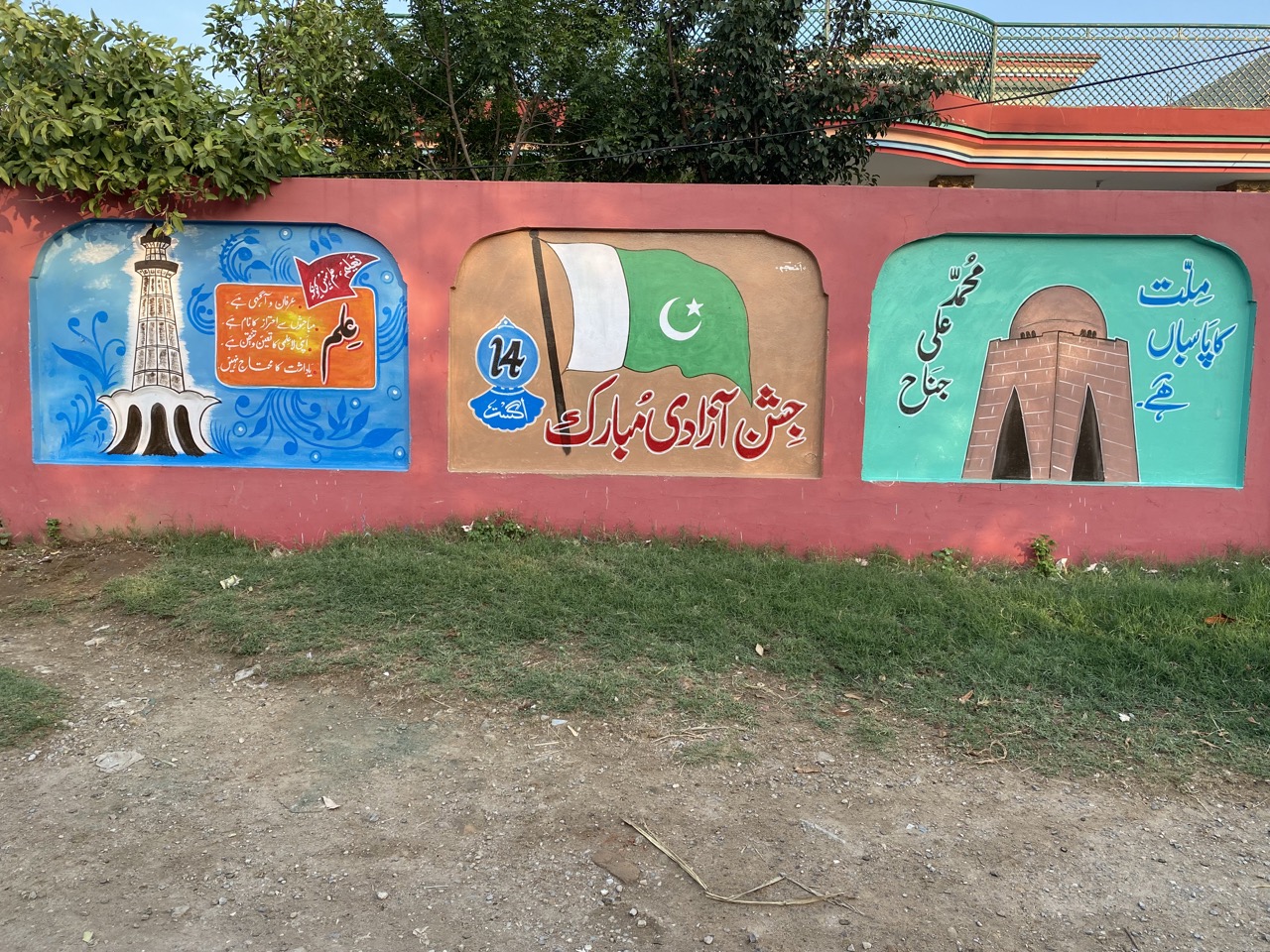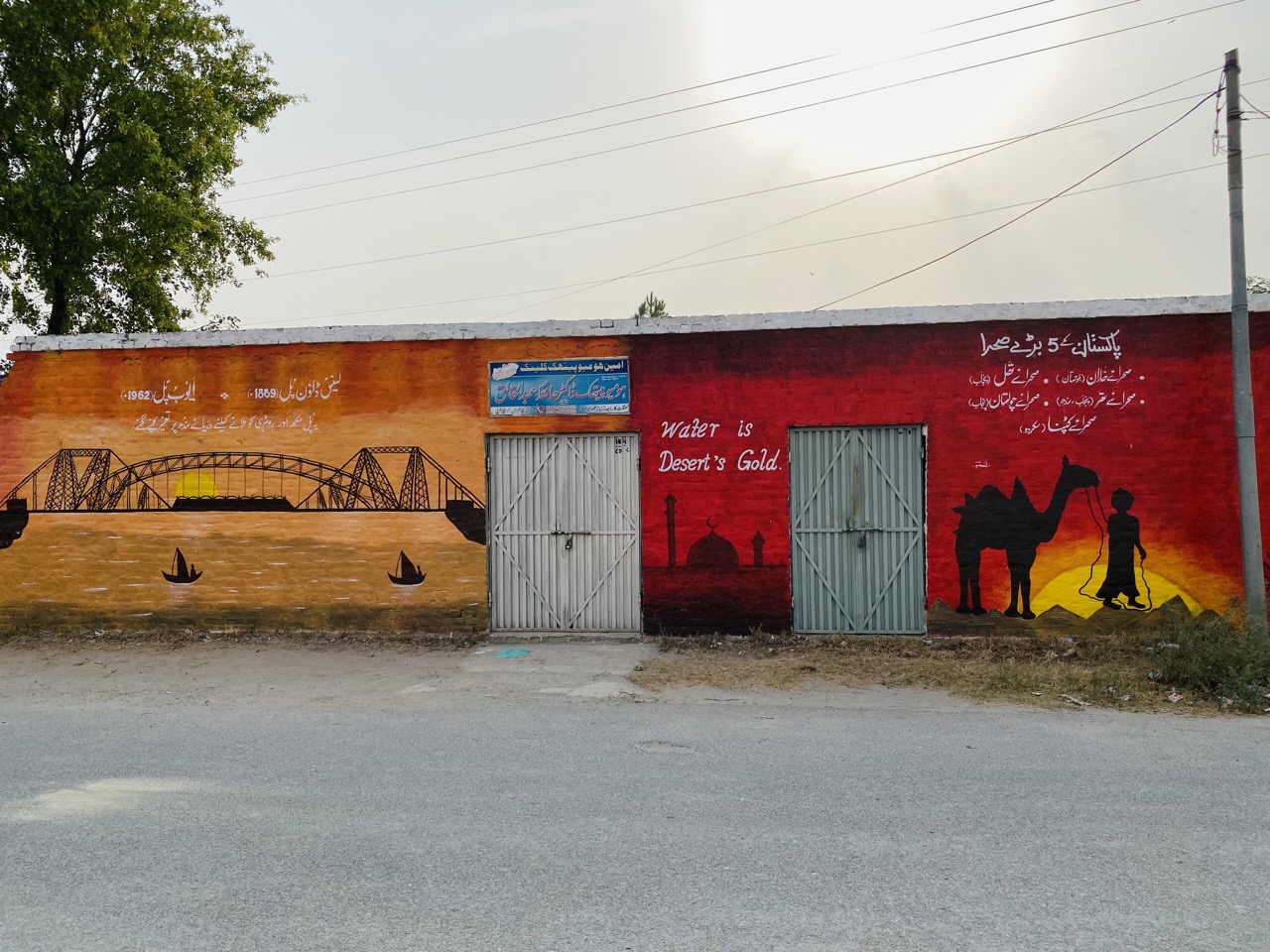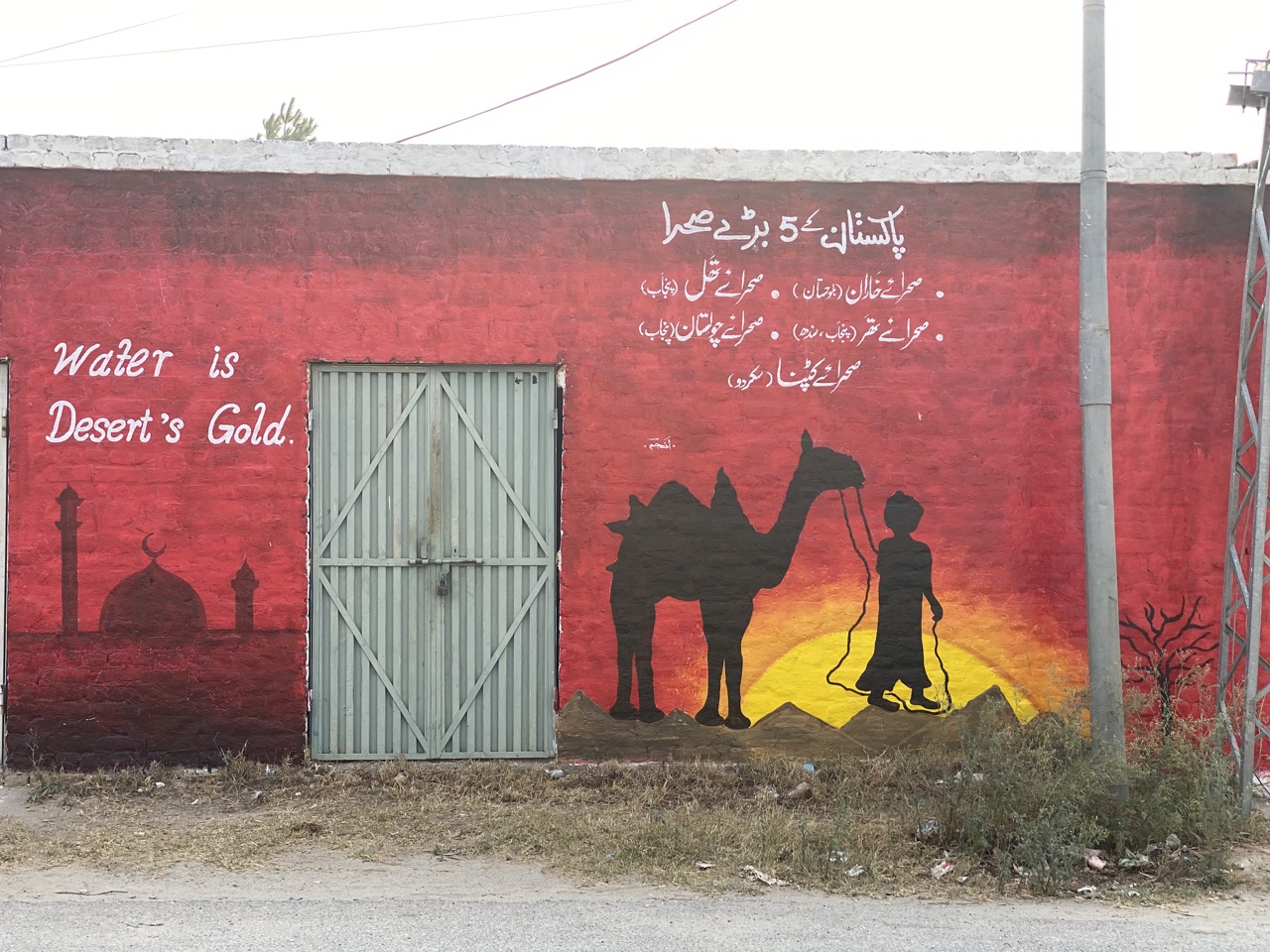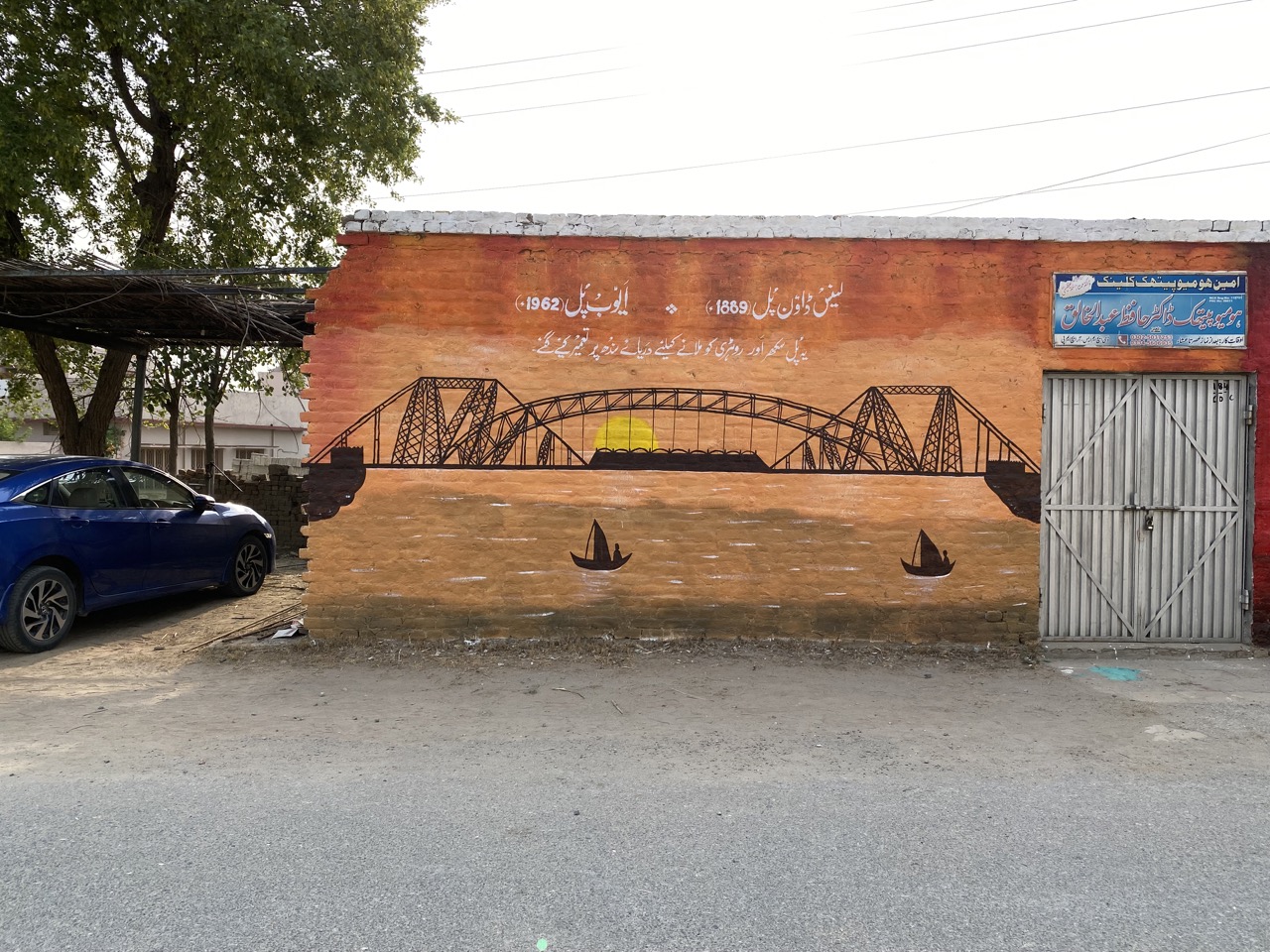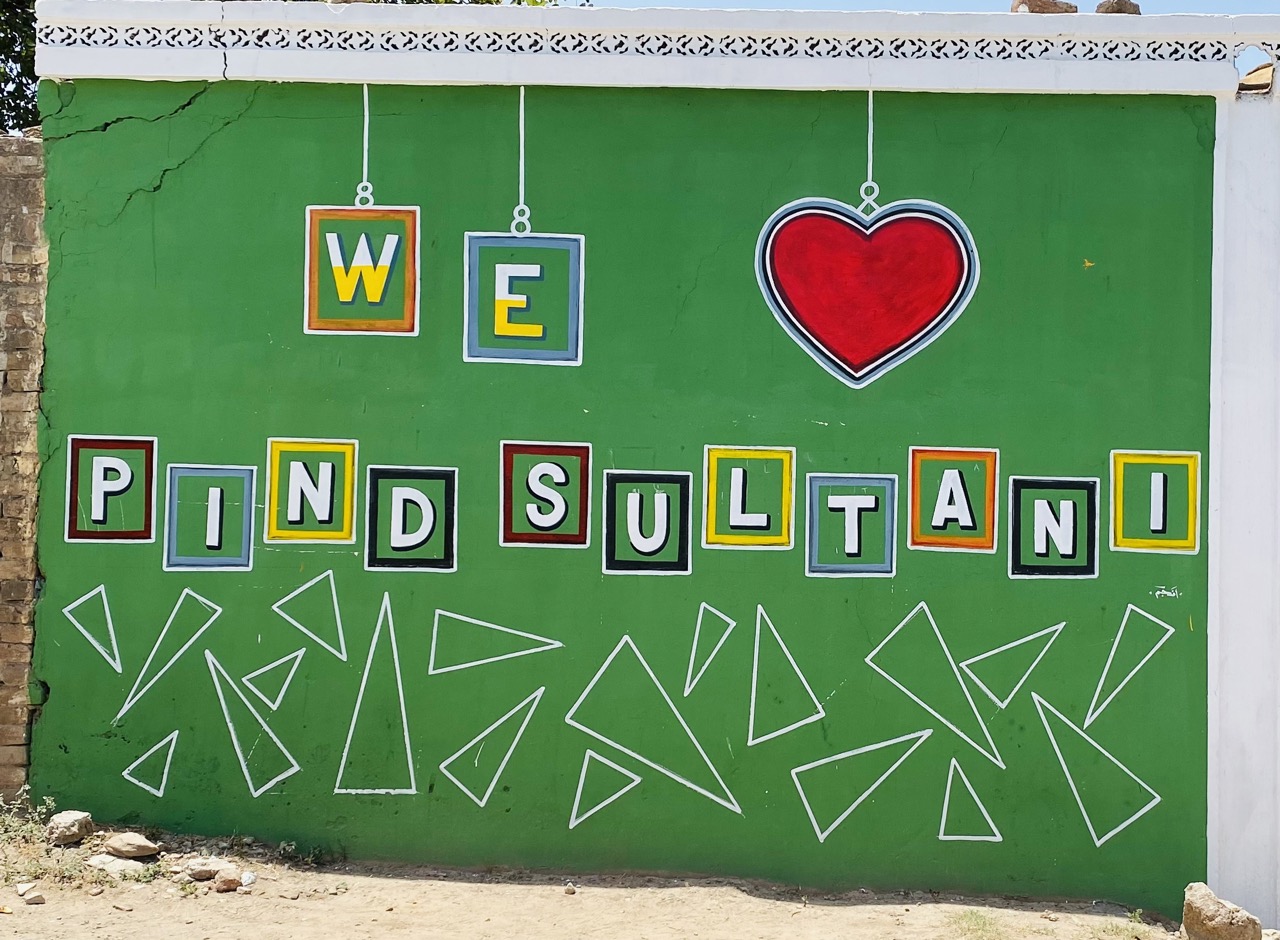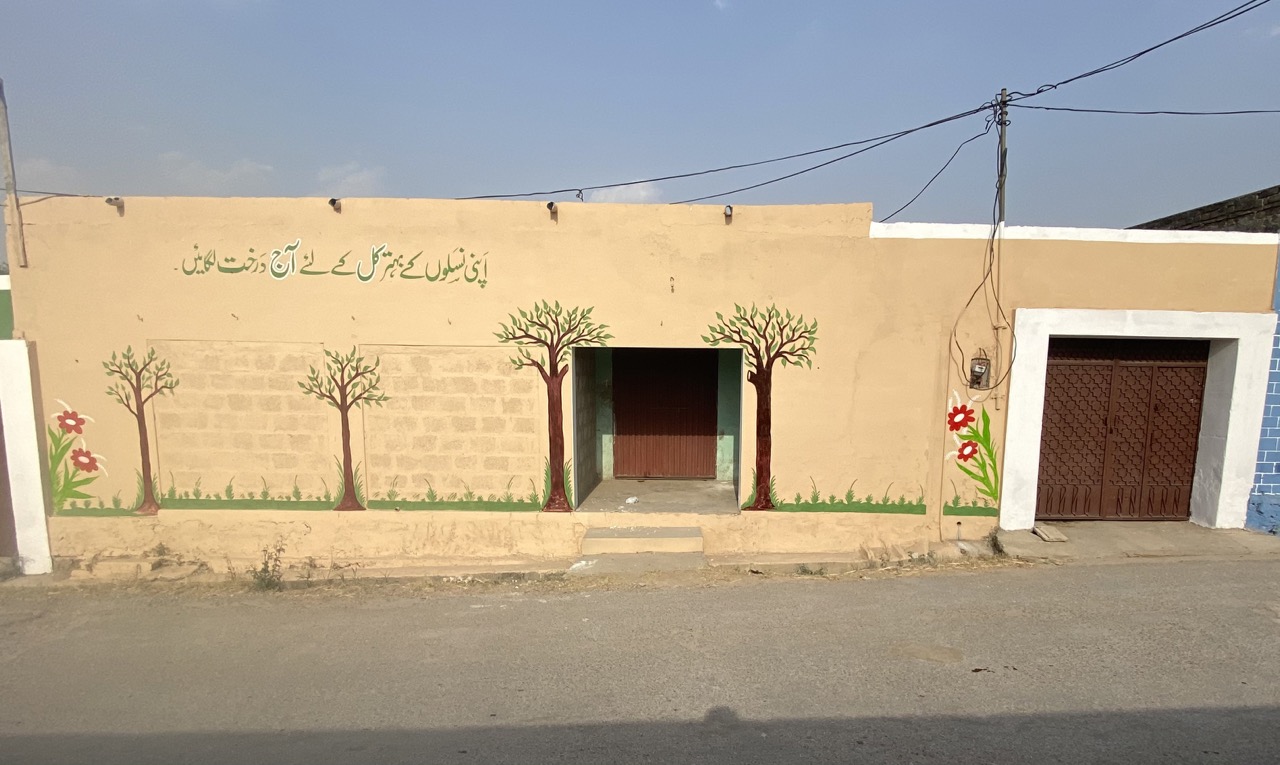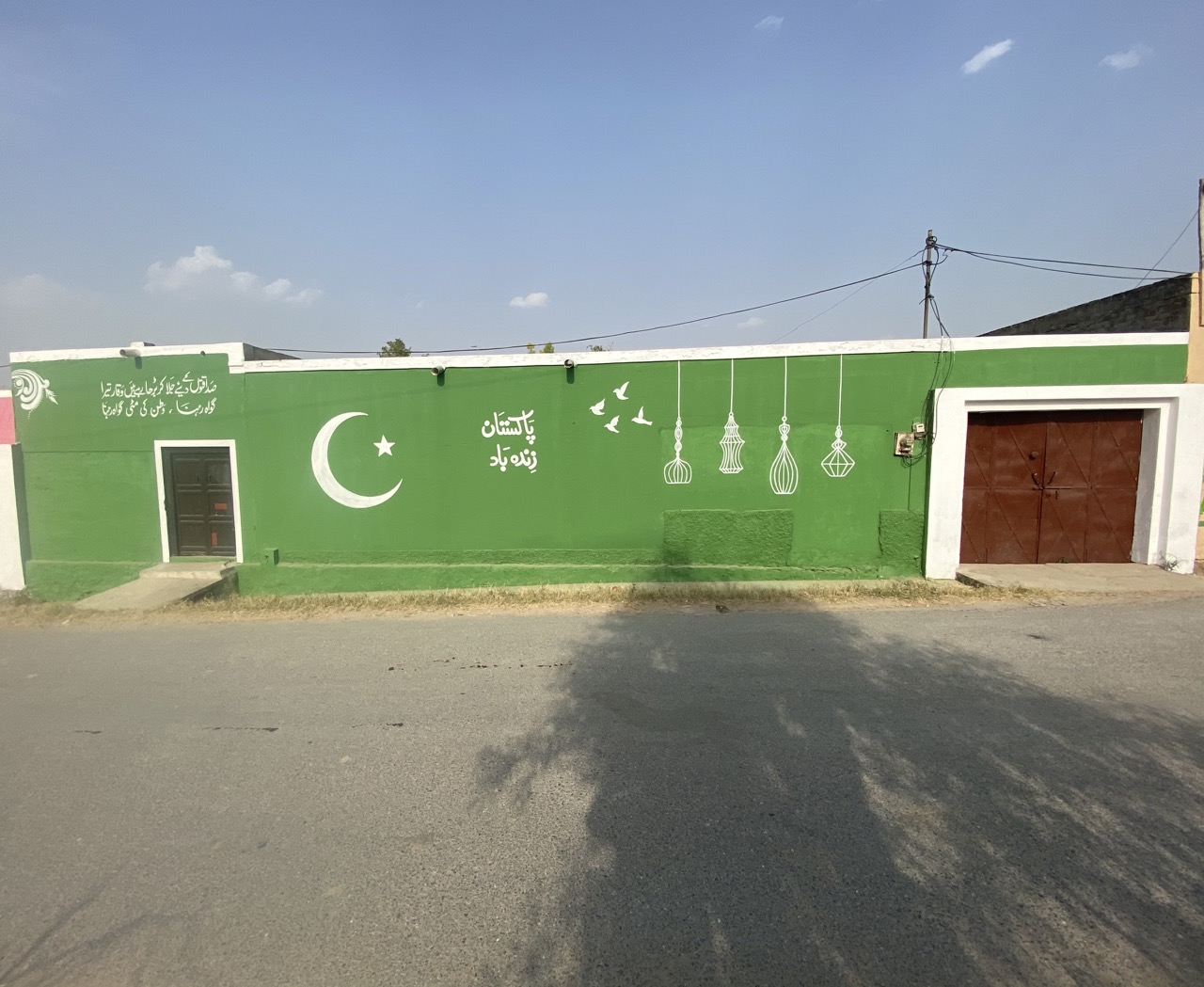The word “knowledge” etched onto the wall of Pindsultani village carries great significance. It represents the pursuit of education and the thirst for understanding in a community that values learning. The people of this village understand that knowledge is a key factor in driving progress and improving their quality of life.
The word serves as a constant reminder that education is not only important for individuals, but for the development of the entire community. It encourages people to seek out opportunities to learn and grow, whether it be through formal schooling or practical experiences.
In Pindsultani village, the word “knowledge” is not just a word on a wall, but a symbol of hope and a promise of a brighter future. The villagers are committed to promoting education and empowering their community through knowledge, paving the way for a prosperous and successful future.
The painting on the wall of Pind Sultani village featuring the words “Jash Azadi Mubarak” is a beautiful and vibrant expression of freedom and celebration. The bold and colorful letters stand out against the neutral background, exuding a sense of joy and pride. The message, which translates to “Congratulations on Independence Day”, speaks to the significance of independence and the importance of commemorating it. This painting is not only a beautiful work of art but also a powerful reminder of the struggles and sacrifices made to achieve freedom. It is a symbol of hope and a call to continue striving for a better future.
The painting of Muhammad Ali Jinnah and the image of the shrine on the wall of Pindsultani village is a testament to the village’s reverence for its historical and cultural heritage. Muhammad Ali Jinnah, the founder of Pakistan, holds a special place in the hearts of many Pakistanis, and his image serves as a reminder of his contributions to the country’s independence.
The shrine depicted in the image is also a significant cultural symbol, representing the spiritual and religious traditions of the village. It is a place of worship and pilgrimage for the villagers, who hold deep respect for their ancestors and the cultural practices passed down through generations.
Together, the painting of Muhammad Ali Jinnah and the image of the shrine showcase the rich history and traditions of Pindsultani village. They are a testament to the villagers’ commitment to preserving their cultural heritage and honoring their past, while also looking forward to a bright and prosperous future.
The picture on the wall of Pindsultani village showcasing the five major deserts of Pakistan and a camel is a tribute to the country’s unique natural beauty and diverse wildlife. The deserts of Pakistan are a significant part of its geography and are home to many species of flora and fauna that have adapted to the harsh desert environment.
The image of the camel, known as the “ship of the desert,” is also an important symbol of Pakistan’s desert landscape. Camels have been used for centuries by the people of these arid regions for transportation, food, and clothing.
The picture on the wall of Pindsultani village not only highlights the natural wonders of Pakistan but also serves as a reminder of the importance of preserving these fragile ecosystems. The villagers recognize the value of their natural resources and the need to protect them for future generations.
Overall, the picture on the wall is the beauty of the deserts of Pakistan.
